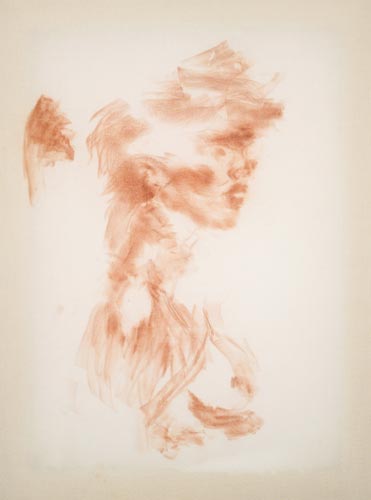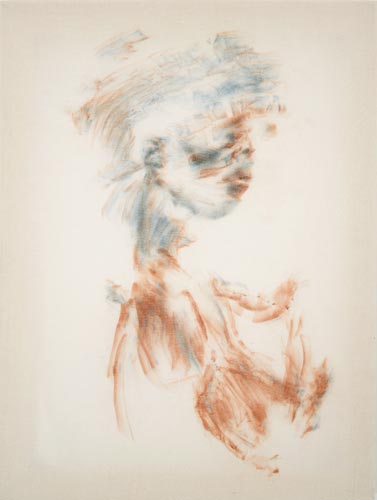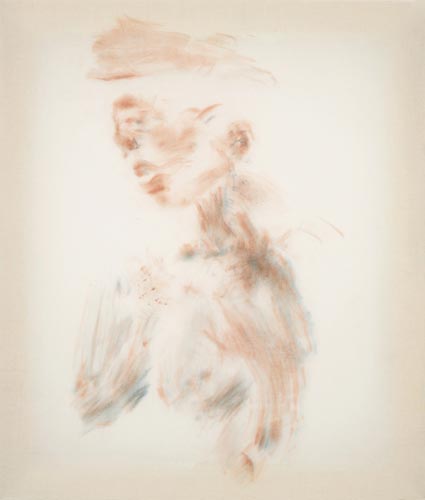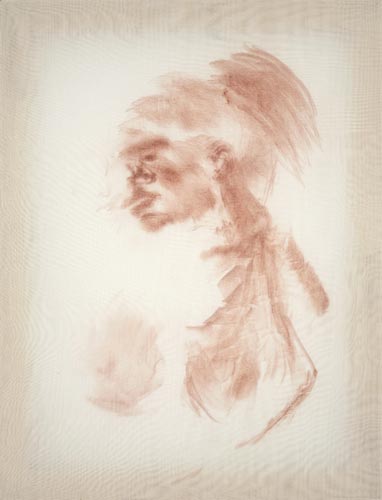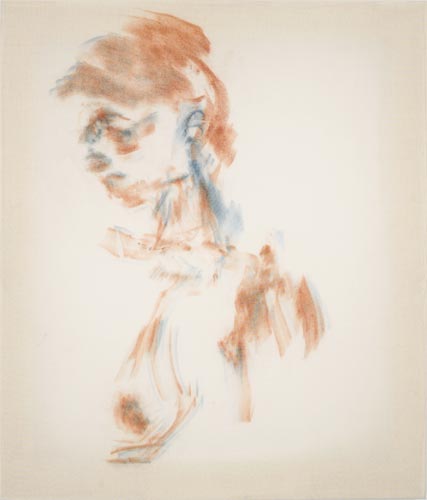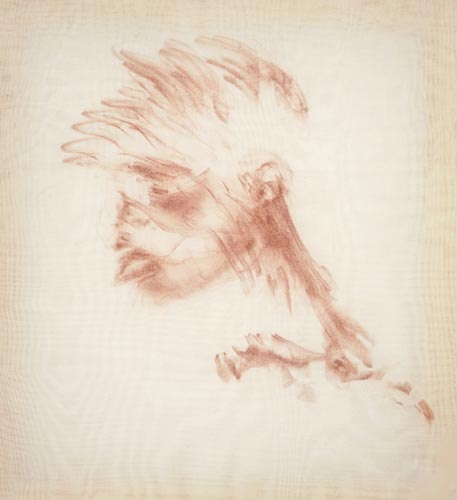Rubbing of Me
Excerpt from tgpBside: The Mews
a conversation between Richard J. Goldstein and Jane Benson:
RG: You recounted placing the sheer muslin canvas over your face and proceeding to make rubbed pastel portraits of yourself. Consequently, this process is the most immediate and direct of all the work. Did working in this way offer a different perspective for you? What was it like to perform the drawing process?
JB: The Rubbing Of Me works are quite literally rubbings of me, making the process of producing the work quite physically comical. To create them, I stand against the wall with a piece of the muslin canvas, that's pinned to the wall, hanging over my face and upper body. I then reach around from behind the canvas and rub the Conté crayon blindly over the contours of my body. Because the muslin canvas is very thin I am covered in red and blue chalk when the rubbing is finished; I look like a primeval, psychotic clown. These works are fast and spontaneous to make, done in one action with no reworking into the piece. I loved the freedom that creating these works provided, they offered an instant freedom from myself. Even though the drawing represents me, I am absent from the work as the self-portraits are not recognizable as me. I am also freed from any decision making in the rubbing process because I am blind to what I’m doing. The Rubbing Of Me works provide me with a freedom from the obsessive restructuring of form and pattern that’s at the core of my accustomed process. Every drawing also looks like a different person, thus the Rubbings are a type of deception. The two-tone, blue and sienna, drawings take this one step further in the way that they mimic 3-D drawings; the viewer is not, however, provided with 3-D glasses and therefore they never fully see what is meant to be seen.
